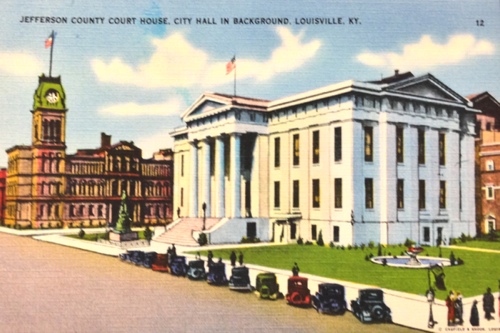Published and Unpublished Decisions from the Kentucky Court of Appeals forAugust 30, 2013 (click here for AOC set of minutes)
The Court of Appeals announced 18 decisions this date, designating four of those decisions for publication (“To Be Published”).
Click here for complete list of all archived Court of Appeals Minutes that you can download from the Administrative Office of the Courts web site.
Short summary of the published decisions for this week are (click on the link for the full text of the decision from AOC):
831. Sovereign and Governmental Immunity
Louisville Arena Authority, Inc. vs. RAM Engineering & Construction
Published. 8/30/2013. Franklin (J. Shepherd)
THOMPSON, JUDGE: These consolidated appeals arise from the procurement of subcontractors for the construction of the KFC Yum! Center (Arena) in downtown Louisville and involve the claims of Ram Engineering & Construction, Inc., an unsuccessful subcontract bidder on the project, and its principals, Richard C. Chilton and William W. Chilton, III, as taxpayers of the Commonwealth of Kentucky (collectively referred to as RAM). The Louisville Arena Authority, Inc. (LAA) and the Commonwealth of Kentucky, Finance and Administration Cabinet filed these interlocutory appeals after the circuit court denied their motions for summary judgment based on sovereign and governmental immunity.
841. Criminal. Motion to suppress evidence.
David Zax Milam vs. Commonwealth of Kentucky
Published. 8/30/2013. Fayette (J. Ishmael)
CLAYTON, JUDGE: David Zax Milam appeals from a judgment and sentence resulting from his conditional plea of guilty. He reserved the opportunity in his plea to appeal the issue of whether the trial court erred when it denied his motion to suppress evidence that was seized during a warrantless search of a fraternity house. After careful review of the record, we affirm the judgment and sentence.
843. Breach of contract. Privlege Fee. Statute of limitations.
Pinnacle Development II, LLC vs. RML Construction LLP
Published; 8/30/2013; Fayette (J. Goodwine)
MOORE, JUDGE: Pinnacle Development II, LLC (Pinnacle) appeals a judgment of the Fayette Circuit Court awarding it $5,049.29, rather than its prayed-for amount of $48,946.59, in its breach of contract action against RML Construction, LLP (RML). RML cross-appeals arguing that the circuit court erred in failing to dismiss Pinnacle’s action as time-barred. Upon review, we agree that Pinnacle’s action was indeed time-barred and we reverse the circuit court’s decision to the contrary.
845. Negligent restraint system.
Nissan Motor Company, LTD vs. Amanda Maddox
Published. 8/30/2013. Lincoln County (J. Tapp).
COMBS, JUDGE: Nissan Motor Company, Ltd., and Nissan North America, Inc., (collectively, “Nissan”) appeal the judgment of the Lincoln Circuit Court which held them liable for injuries sustained by Amanda Maddox (now Gifford). After our review, we affirm.
Amanda asked the jury to determine that Nissan had designed the Pathfinder to provide maximum protection for the 50th percentile dummy while neglecting the safety of larger occupants. She claimed that Nissan merely wanted to achieve the five-star rating in order to be more appealing to consumers. She also pointed out that while Nissan consistently touted the safety of the load limiter in the seatbelt, the back seatbelts do not have load limiters, and crash tests are not performed on back seat occupants. Amanda also cited weaknesses in the testimony of Nissan’s witnesses, such as a lack of analysis of her collapsed seat. After our review of the full record and pertinent authorities, we are not persuaded that the verdict was unsupported by the evidence or that it was a result of passion. Thus, we affirm the denial of the motion for a directed verdict.
Plaintiffs in a products liability action may plead negligence claims based on one of three theories: 1) design defect; 2) manufacturing defect; or 3) failure to warn. Clark v. Hauck Mfg. Co., 910 S.W.2d 247, 251 (Ky. 1995). Amanda presented both a failure-to-warn theory and a design-defect claim. Although the jury needed to find against Nissan according to only one theory in order to find it liable, it determined that Nissan was liable under both theories. See Martin v. Ohio County Hospital Corp., 295 S.W.3d 104, 115-16 (Ky. 2009).
Three elements are necessary to prove a crashworthiness claim:
(1) an alternative safer design, practical under the circumstances;
(2) proof of what injuries, if any, would have resulted had the alternative, safer design been used; and
(3) some method of establishing the extent of enhanced injuries attributable to the defective design.
Toyota Motor Corp. v. Gregory, 136 S.W.3d 35, 41 (Ky. 2004).
[gview file=”https://kycourtreport.com/wp-content/uploads/2013/09/MNT08302013.pdf”]

